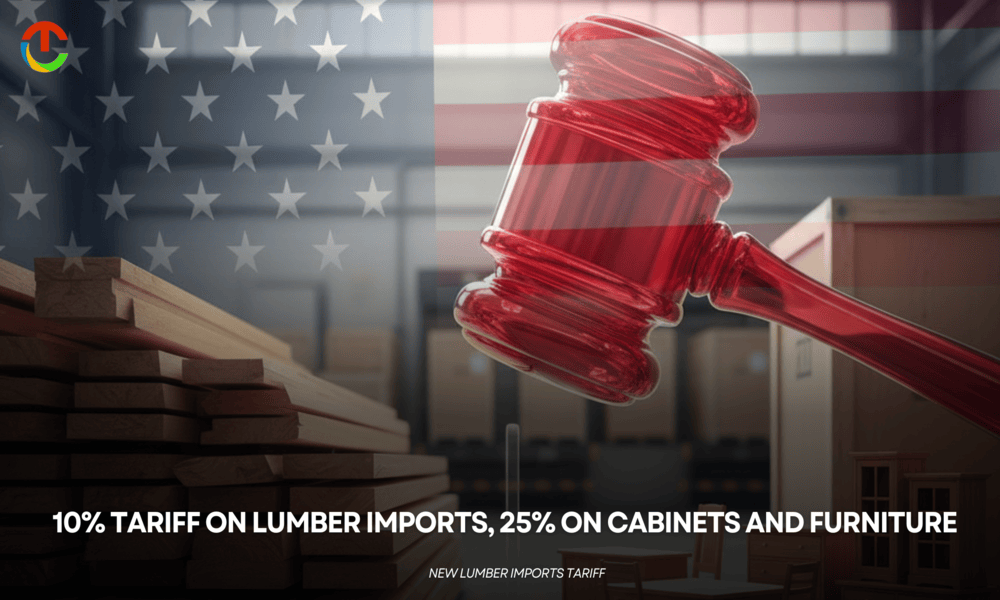In a bold trade action, the United States imposed a 10% lumber import levy on all inbound wood exports. The policy adjustment also includes a 25% levy on imported cabinets and furnishings, causing ripples in global supply chains. The proposal reflects Washington’s more robust approach to defending domestic industry and forestry interests.
The decision follows months of lobbying by domestic timber producers, who argue foreign competitors undercut U.S. suppliers by taking advantage of lax trade barriers. With the new lumber imports tariff, the administration aims to level the playing field and stimulate local job growth in forest-related industries.
In addition to the 10% levy on raw wood, finished goods like cabinets and furniture are hit harder. A 25% tariff will apply to these imports, placing significant pressure on manufacturers relying on overseas components. The new duties are expected to take effect within 60 days, giving importers and retailers a narrow window to adjust their sourcing strategies.
Many industry analysts view the move as politically timed. With domestic manufacturers under pressure from cheaper imports, the government seems to be siding with American producers ahead of upcoming elections. Still, trading partners may see it differently — retaliation and trade disputes could follow.
Impact of the New Lumber Imports Tariff
The lumber imports tariff is likely to elevate costs for U.S. builders, contractors, and consumers relying on imported wood. Over time, increased raw material costs may pass down to homebuyers, especially in markets where domestic supply cannot meet demand. Smaller construction firms with low-margin projects might be hit hardest.
Furniture retailers and wholesalers also face disruption. Many domestic vendors source components or fully assembled products from overseas, particularly in regions like Southeast Asia, China, and Latin America. The 25% tariff on cabinets and furniture could force them to shift to domestic suppliers, rework supply chains, or absorb partial losses.
Some U.S. furniture brands have already signaled plans to ramp up local production. But capacity constraints, labor shortages, and higher costs of domestic operations could slow that transition. The challenge will be in bridging the gap between rising import costs and sustainable local alternatives.
Trade partners are watching closely. Countries affected by the tariffs may file disputes with the World Trade Organization (WTO) or retaliate with their own duties on U.S. exports. Diplomatic negotiations may intensify, particularly with nations that view the tariffs as protectionist and harmful to bilateral trade.
To mitigate backlash, the U.S. administration is reportedly considering relief measures or funding incentives for affected importers and downstream industries. These could take forms such as tax credits, transition assistance, or subsidies for domestic timber processing.
While the lumber imports tariff may give a short-term boost to U.S. forestry and furniture interests, its ripple effects could strain relationships with trading partners and raise prices for consumers. The coming months will reveal whether the strategy succeeds in balancing economic, political, and trade pressures.
Read more about: Sustainability in Adventure Parks










